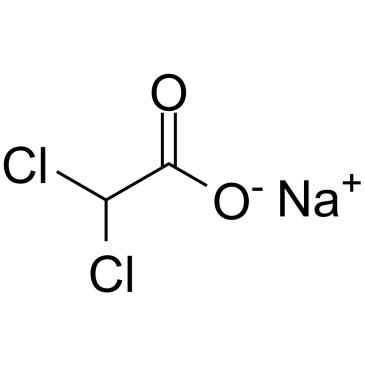Bicarbonate and dichloroacetate: evaluating pH altering therapies in a mouse model for metastatic breast cancer.
Ian F Robey, Natasha K Martin
Index: BMC Cancer 11 , 235, (2011)
Full Text: HTML
Abstract
The glycolytic nature of malignant tumors contributes to high levels of extracellular acidity in the tumor microenvironment. Tumor acidity is a driving force in invasion and metastases. Recently, it has been shown that buffering of extracellular acidity through systemic administration of oral bicarbonate can inhibit the spread of metastases in a mouse model for metastatic breast cancer. While these findings are compelling, recent assessments into the use of oral bicarbonate as a cancer intervention reveal limitations.We posited that safety and efficacy of bicarbonate could be enhanced by dichloroacetate (DCA), a drug that selectively targets tumor cells and reduces extracellular acidity through inhibition of glycolysis. Using our mouse model for metastatic breast cancer (MDA-MB-231), we designed an interventional survival study where tumor bearing mice received bicarbonate, DCA, or DCA-bicarbonate (DB) therapies chronically.Dichloroacetate alone or in combination with bicarbonate did not increase systemic alkalosis in mice. Survival was longest in mice administered bicarbonate-based therapies. Primary tumor re-occurrence after surgeries is associated with survival rates. Although DB therapy did not significantly enhance oral bicarbonate, we did observe reduced pulmonary lesion diameters in this cohort. The DCA monotherapy was not effective in reducing tumor size or metastases or improving survival time. We provide in vitro evidence to suggest this outcome may be a function of hypoxia in the tumor microenvironment.DB combination therapy did not appear to enhance the effect of chronic oral bicarbonate. The anti-tumor effect of DCA may be dependent on the cancer model. Our studies suggest DCA efficacy is unpredictable as a cancer therapy and further studies are necessary to determine the role of this agent in the tumor microenvironment.
Related Compounds
| Structure | Name/CAS No. | Molecular Formula | Articles |
|---|---|---|---|
 |
Sodium Dichloroacetate
CAS:2156-56-1 |
C2HCl2NaO2 |
|
Dual-targeting of aberrant glucose metabolism in glioblastom...
2015-01-01 [J. Exp. Clin. Cancer Res 34 , 14, (2015)] |
|
A Korean female patient with thiamine-responsive pyruvate de...
2006-10-01 [J. Korean Med. Sci. 21 , 800-4, (2006)] |
|
Sensitization of Glioblastoma Cells to Irradiation by Modula...
2015-08-01 [Mol. Cancer Ther. 14 , 1794-804, (2015)] |
|
Bioenergetic modulation with dichloroacetate reduces the gro...
2014-01-01 [J. Transl. Med. 12 , 247, (2014)] |
|
Novel N-phenyl dichloroacetamide derivatives as anticancer r...
2010-09-01 [Eur. J. Med. Chem. 45 , 4300-6, (2010)] |